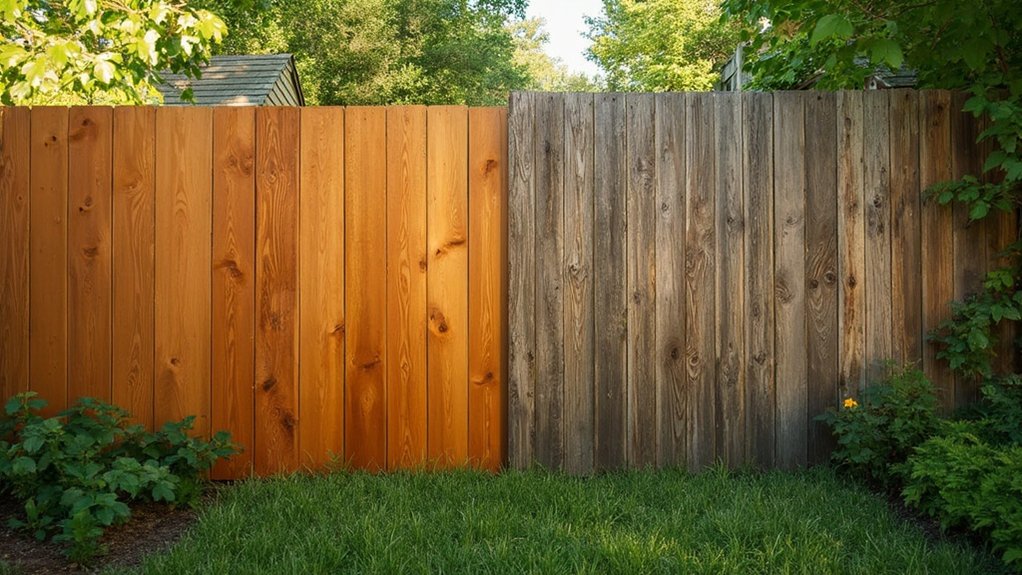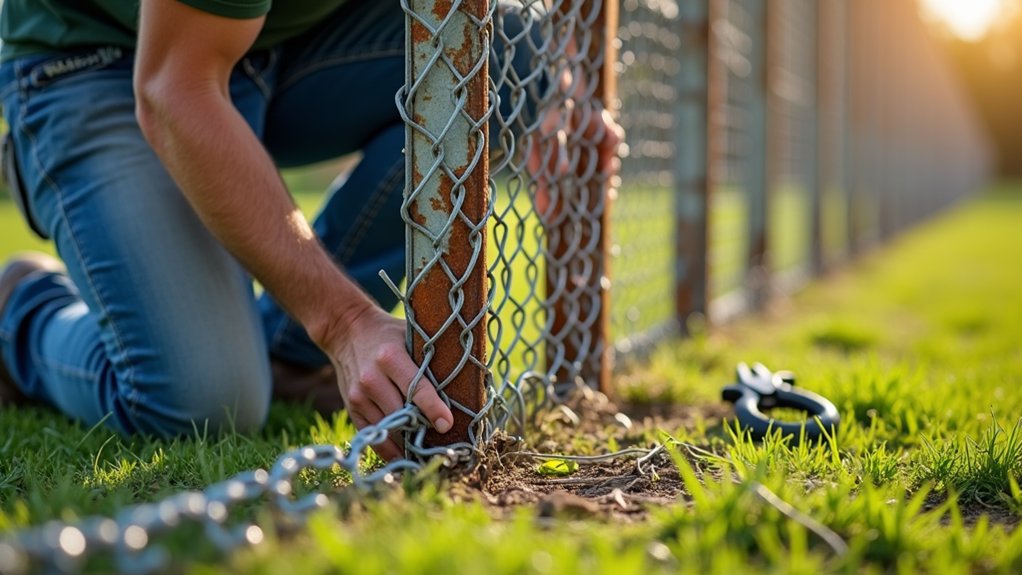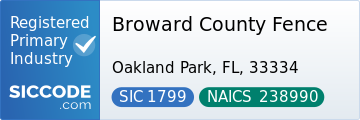When choosing between aluminum, steel, and wrought iron fencing, think about durability, maintenance, and looks. Aluminum is light, eco-friendly, and low-maintenance—great for those who want something easy to care for. Steel is strong but may rust, so it needs some extra care. Wrought iron has a classic charm but requires regular upkeep. Each material comes with different costs and customization options, so consider your budget and style preferences. For more details on how these factors can affect your choice, there’s additional information available.
Key Takeaways
- Choose aluminum for a lightweight, eco-friendly fence that requires little maintenance and resists corrosion—great for sustainable projects.
- Pick steel if you need a strong, cost-effective option, but remember it may require rust protection and regular upkeep.
- Go for wrought iron if you want a classic look with intricate designs, but be ready for more maintenance and higher costs.
- Think about your budget: steel and aluminum usually cost less upfront than wrought iron, which can also be customized.
- Consider how long you need the fence to last. Wrought iron can exceed 50 years, while aluminum and steel typically last 20-30 years.
Material Characteristics and Origins

When selecting fencing materials, it’s important to consider their characteristics and origins.
Aluminum fencing, made from recycled materials, is eco-friendly, lightweight, and resistant to corrosion. It’s a great choice for those who prioritize sustainability. Durability in fencing choices is also a key reason many homeowners opt for aluminum due to its low maintenance needs and safety benefits that provide secure enclosures for children and pets.
Steel fencing mimics wrought iron but isn’t as recyclable.
Wrought iron, made through traditional forging, offers a classic look and can be shaped into intricate designs, but it requires more maintenance in damp conditions.
Durability and Longevity Comparison

When comparing the durability and longevity of fencing materials, it’s essential to understand their characteristics.
Wrought iron fences are known for their strength, often lasting over 50 years due to their sturdy build and high impact resistance. In contrast, aluminum fences last about 20 to 30 years and can bend more easily. While all three materials are weather-resistant, aluminum performs best in corrosive environments because of its natural oxidation. Aluminum fences are also built to withstand various climates and are designed to be low maintenance, which enhances their durability in specific environments. Steel is a solid option but may need additional protection from the elements. If you want a fence that lasts the longest and withstands harsh conditions, wrought iron is the best choice. Additionally, aluminum fences are corrosion-resistant and ideal for humid or coastal areas, enhancing their durability in specific environments.
Maintenance Requirements for Each Material

When choosing a fencing material, maintenance plays a crucial role in keeping your fence functional and looking good over time.
- Aluminum fencing needs annual cleaning with mild soap and water, and it’s wise to check for scratches or loose panels regularly. Regular maintenance helps maintain the luster of the powder-coated finish.
- Steel fencing requires rust prevention strategies and may need repainting, especially in damp areas, as the material is susceptible to rust without proper care.
- Wrought iron also needs rust protection and regular cleaning with mild soap, plus touch-up painting to keep it looking its best; applying protective coatings can significantly extend its lifespan.
Installation Process and Labor Considerations

Installing a fence involves weight and handling challenges that can affect the process.
For instance, wrought iron is heavier and needs specialized skills for installation, making it more complex than lighter materials like aluminum.
Recognizing these differences will help you better understand labor needs and overall costs.
Weight and Handling Challenges
When choosing fencing materials, consider how weight affects installation and labor. Heavier options, like wrought iron, can complicate the setup and require more skilled labor, increasing costs.
Here are some key points to think about:
- Lighter materials (e.g., aluminum) are easier to transport and don’t need special equipment.
- They also speed up installation, reducing labor time.
- Heavier materials require larger teams, which can drive up expenses.
- Handling heavier materials poses safety risks, so protocols must be in place.
- Lighter materials may need more posts, which can slow down installation due to extra digging.
Selecting the right material based on weight can significantly impact your project’s efficiency and budget.
Installation Techniques Comparison
Choosing the right fencing material can save you time and money during installation. Here’s a straightforward comparison of aluminum, steel, and wrought iron.
| Material | Installation Efficiency |
|---|---|
| Aluminum | Pre-assembled sections cut down labor time significantly. |
| Steel | Modular design allows for faster setup but needs heavy machinery. |
| Wrought Iron | Requires hand-welding, making installation slower and more complex. |
Aluminum is lightweight, easy to adjust, and only needs basic tools, making it the fastest and most cost-effective option. In contrast, steel and wrought iron require specialized skills and equipment, which can increase both time and expenses. For fencing that’s efficient in both installation and cost, aluminum stands out as the best choice.
Labor Skill Requirements
When choosing fencing materials, consider the installation labor skills needed. This will help you decide if you should tackle the project yourself or hire a professional.
- Aluminum: Easy for DIY; you only need basic tools and some experience.
- Steel: Requires strength and skill; it’s best to hire a professional.
- Wrought Iron: Needs specialized training for proper installation.
- Safety Gear: Always important, especially with heavier materials.
- Permits: Check local regulations, as some materials might need special permits.
Assess your skills and the project’s needs to ensure a smooth installation.
Making the right choice can save you time, cut costs, and improve safety.
Aesthetic Appeal and Customization Options

When selecting fencing materials, think about style and color options.
Aluminum fencing is flexible, with various styles and finishes that can match your home’s look.
Wrought iron, on the other hand, offers detailed customization, providing a timeless elegance to any property.
Design Versatility
When selecting fencing materials, design versatility is key to enhancing your property’s look.
Each material brings its own style and customization options:
- Wrought Iron: Offers classic elegance with detailed, handcrafted designs.
- Aluminum: Features a modern look with clean lines and adjustable panel heights.
- Steel: Provides adaptable designs suitable for both industrial and minimalist settings.
With these options, you can easily find a fence that complements your home’s character while boosting its curb appeal.
Color and Finish Options
Color and finish options play a crucial role in the look of your fencing, allowing you to match it with your property’s style.
Aluminum fencing comes in various colors like black, white, and Quaker Bronze, making it easy to stay on-trend. Plus, its durable finish means you won’t have to repaint it often.
Steel fencing offers fewer color choices and requires more upkeep to maintain its coating.
Wrought iron usually comes in classic black, but changing its color can be labor-intensive.
Ultimately, selecting the right material for color and finish can enhance your property’s appearance and ensure long-lasting beauty.
Cost Analysis and Budget Considerations

When selecting a fencing material, it’s crucial to consider costs and your budget, as these factors significantly influence your investment.
Here’s a quick breakdown:
- Aluminum: $20 to $30 per linear foot; requires minimal upkeep.
- Wrought Iron: $24 to $34 per foot; installation can be pricier due to labor.
- Steel: Comparable to aluminum at $20 to $30 per foot; offers strong durability.
- Long-term Costs: Wrought iron may incur higher maintenance costs over time.
- Customization: Wrought iron designs can add to the overall price.
Evaluate these elements to ensure you select a fencing material that fits your budget and meets your style and durability needs.
Frequently Asked Questions
Which Fencing Material Is Best for Coastal Areas?
For coastal areas, opt for fencing materials that resist corrosion and require little maintenance. Aluminum and vinyl are top choices, as they can handle salty air without rusting, offering durability and ease of upkeep.
How Does Each Material Handle Extreme Weather Conditions?
In extreme weather, aluminum is great because it resists corrosion and is low maintenance. Steel is tough against impacts but needs protective coatings to prevent rust. Wrought iron is strong but requires regular care to avoid rust and ensure it lasts.
Are There Eco-Friendly Options for Each Fencing Type?
Yes, there are eco-friendly options for every fencing type. Aluminum is often made from recycled materials, promoting sustainability. Steel and wrought iron are both recyclable and durable, helping to reduce your environmental impact.
What Are the Best Practices for Winter Care of Fences?
To prepare your fence for winter, regularly check for damage and clear snow gently to prevent stress. Ensure proper drainage around the fence to avoid water buildup. Protect your fence from harsh weather to maintain its durability and strength all season long.
Can I Mix Materials for a Unique Fencing Design?
Yes, you can mix materials for a unique fence! For example, combining wood with metal can create a stylish and durable design. Just make sure the materials complement each other in style and strength. This not only improves the look of your fence but also helps manage costs, giving you a functional barrier that stands out.
Conclusion
When choosing between aluminum, steel, and wrought iron fencing, consider what each material offers for your property. Aluminum is lightweight and resistant to rust, making it a low-maintenance option. Steel is strong and secure, great for high-traffic areas, but may require more upkeep to prevent rust. Wrought iron provides a classic look and excellent durability, though it can be heavier and more expensive. Weigh factors like durability, maintenance, appearance, and cost to find the best fit for your needs. This thoughtful selection will ensure your fence enhances your property while providing security.









